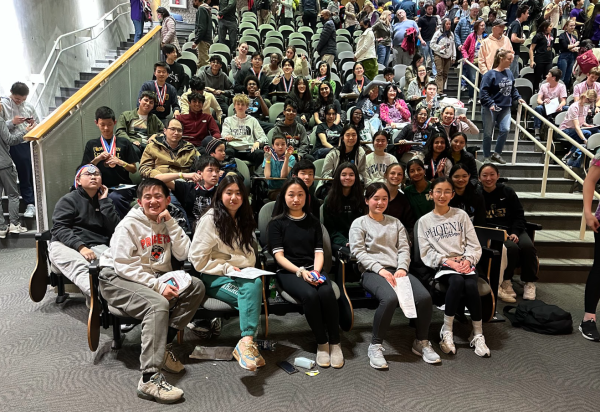Letter to the Editor: Screed on screen
Letters to the editor are columns sent to the publication about issues of concern from its readers. If you’re interested in sending a piece (500-800 words), please send your letters to [email protected]
April 5, 2019
Today, like many days, I head a headache both during the school day and afterward. Who or what is the nefarious culprit behind these head pains? The answer is screens. While certainly not all and probably not even most students experience screen headaches, a link between screen use and headaches has in fact been found by studies. According to the National Headache Foundation, a study at the University of Bergen, Norway of 30,000 teens definitively concluded that headaches and other pains increase with screen time.
Where does school come into this? Well, if you think about it, the screen is ubiquitous at school. In almost every period of the day, screen use is constant, involving either a Smartboard or Chromebook, and in many cases both. I think it’s safe to say that of the 7 hour school day, at least 6 of those hours are spent staring at a screen. It’s a pretty startling thing to realize, especially when you consider that the current CDC guideline for teens is 2 hours per day. Even more horrifying is when you consider what students do at home. Most homework is done on a screen, as are most free time activities, such as watching TV, browsing the web and social media, texting, and playing video games. Additionally, my brother and I have noticed that our headaches seem to be much worse on days where we use more screen. The current system of screens at school is forcing students, in some cases against their will, into a cycle of almost constant screen use at every waking hour.
So what can be done about this problem? The school must provide all students, or at least those that complain of headaches, free eyewear protection against blue light, which is one of the main factors in causing screen headaches. Or, the school must take substantial action to reduce screen use in the classroom. Glasses can be purchased with blue light protection, but individuals should not be forced to foot this bill. It is the school’s responsibility, not our own, to keep us safe in their environment. Just as the school would provide special treatment for students allergic to, say, peanuts, they also must provide treatment for screen headaches.
If the school refuses to buy blue light glasses, then the school must promise to substantially reduce screen use in class. Teachers should be made to agree that only a small fraction of their class time, perhaps ¼ or ⅕, can be spent on screen. Students who don’t suffer headaches would still be able to use their own screens if they liked, but the teachers would not subject the whole class to screens against the will of those who suffer headaches. Just as the school reduces the presence of cancer-causing asbestos in the classroom, the same approach should be taken toward screens.
Plus, I hope we can all agree that even those students who don’t suffer from headaches would be better off if their daily screen use was closer to the doctor recommended amount of 2 hours. Simply put, the system has got the change. The school has a responsibility to keep its students in a safe and healthy environment. By subjecting students to a vast excess of screen time and in many cases causing headaches, the school is failing in this duty.
















